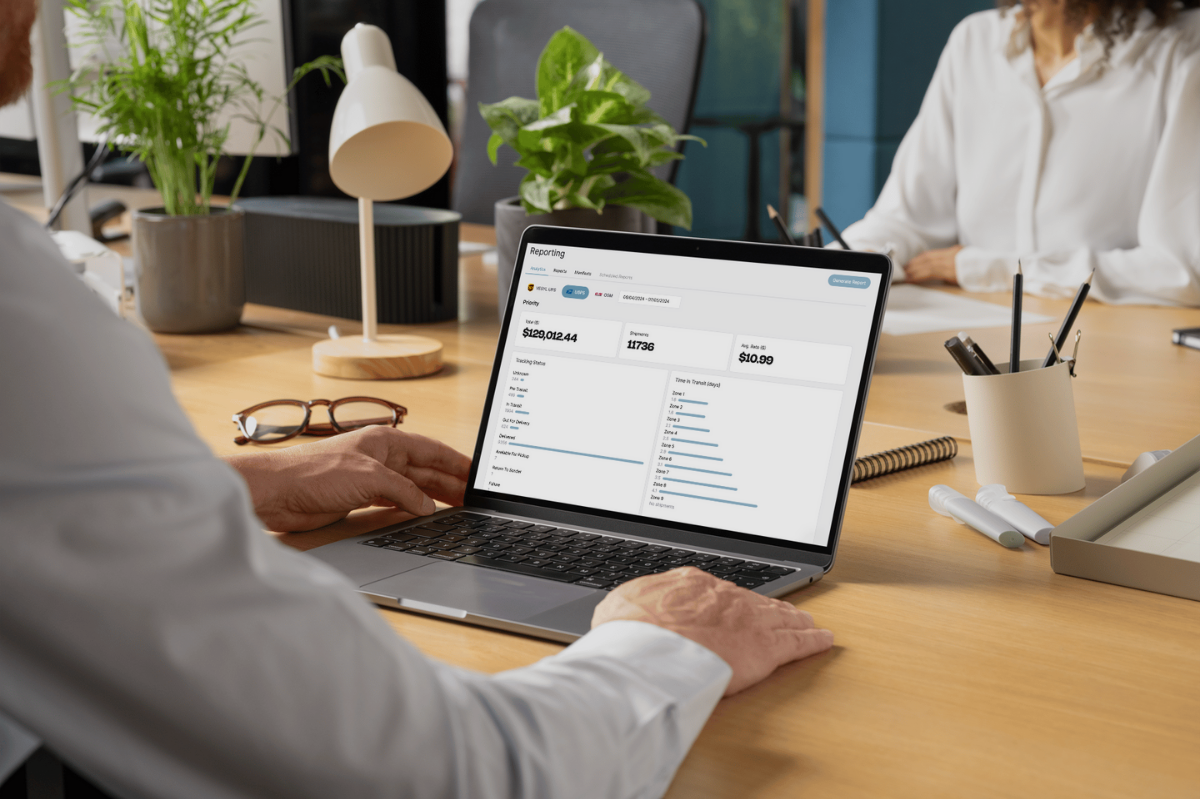Logistics leaders are investing heavily in automation, AI, and warehouse technology to improve logistics operations and supply chain performance. Yet one critical piece continues to receive far less attention than it deserves: carrier performance data. Without clear real time visibility, even the most advanced fulfillment operation can fall short of customer expectations.
Most shippers struggle with logistics visibility, a challenge across supply chains of all sizes.
Carrier performance affects everything from on time performance to transportation costs. Many logistics companies lack a unified view of a carrier's performance, which reduces the ability to make informed decisions and impacts customer satisfaction.
What Is Carrier Performance Data?
Carrier performance data refers to quantifiable data and performance metrics used to track, monitor, and improve the entire process of shipping. This includes delivery tracking, analysis of shipping routes, on time delivery, and insights that help improve logistics operations, operational efficiency, and overall performance.
Key performance metrics include:
- Transit time by carrier and delivery location
- On time delivery rates across supply chains
- SLA compliance by service level
- Cost per shipment relative to successful delivery
- Damage and exception rates
- Frequency and accuracy of real time updates
Using real time data, companies can make informed decisions, reduce risk, and improve customer satisfaction by exceeding customer expectations.
Why Carrier Visibility Is Often Overlooked
Despite its importance, real time visibility into carrier performance is still limited. Poor communication between multiple carriers, outdated systems, and lack of resources all contribute to blind spots in logistics operations.
Disjointed Carrier Data
Each carrier uses different reporting formats, APIs, and update cadences. This disjointed carrier performance data hinders logistics visibility, making it difficult to track shipments and monitor on time performance.
Limited Visibility from Traditional Tools
Many warehouse or transportation management systems focus on booking, labeling, and basic order flow, but fail to provide real time tracking or deep data analytics across shipping routes. This limits efficiency, prevents full transparency, and makes it harder to exceed customer expectations.
Lack of Internal Resources
Most shippers rely on manual processes to compile carrier performance metrics. Operations teams often lack the time and tools to fully analyze real time data or quantifiable data across multiple carriers, which impacts decision making and reduces operational efficiency.
Why Carrier Performance Data Should Be a Priority
As fulfillment grows more complex, customer expectations rise. Carrier performance data allows companies to manage risk, optimize logistics supply chain operations, and improve on time delivery.
Inform Cost-Effective Decisions
The cheapest carrier doesn’t always offer the best value. Detailed carrier performance metrics allow companies to optimize shipping routes, reduce transportation costs, and manage inventory levels more effectively, ultimately generating cost savings.
Strengthen Negotiating Power
Analyzing lane-level performance metrics provides leverage in negotiations with carriers. Companies can advocate for contracts that reflect service quality, on time performance, and reliability instead of just price.
A Real-World Look at Carrier Visibility
Companies shipping thousands of packages through multiple carriers often see only a surface-level view of performance. Using carrier performance data, real time tracking, and analysis of shipping routes, logistics companies can uncover actionable insights:
- Some carriers perform well in urban zones but poorly in rural delivery locations
- Competitive carriers may have high damage rates or exceptions, increasing the total cost
- Regional providers may outperform national carriers in certain zones
This level of real time visibility enables informed decisions that improve on time performance, reduce excess inventory, and enhance customer satisfaction.
How to Build Carrier Visibility Into Your Operations
- Aggregate Data Across All Carriers
Centralize carrier performance data to improve logistics visibility. Use APIs, third-party software, or internal tools to unify performance metrics and real time insights across multiple carriers. - Focus on Actionable Metrics
Prioritize KPIs like average delivery time, SLA compliance, on time delivery, and exceptions by zone or product type. - Use Data to Guide Carrier Selection
Assign carriers strategically based on performance metrics, shipping routes, and historical on time performance. - Monitor Changes Over Time
Real time tracking and data analytics enable continuous improvement. Route optimization and real time updates help adapt to unexpected events and unforeseen circumstances.
The Role of Route Optimization in Carrier Data Visibility
Route optimization plays a crucial role in improving logistics visibility and carrier performance. Breaking it into smaller, actionable areas:
Optimizing Shipping Routes for Efficiency
Using GPS tracking, IoT devices, and machine learning, logistics companies can streamline operations, reduce fuel consumption, and manage inventory levels. Optimized shipping routes also improve on time delivery and minimize excess inventory.
Real-Time Tracking and Visibility
Real time tracking provides full transparency into the shipping process, order status, and carrier’s performance. Real time visibility allows logistics operations to identify issues quickly and maintain excellent customer service.
Enhancing Operational Efficiency
Integrating carrier performance data with route optimization enables companies to identify patterns in deliveries, monitor the entire process, and make informed decisions to improve overall performance and achieve maximum efficiency.
Cost Savings and Compliance
Optimized shipping routes reduce transportation costs, improve inventory management, and help logistics companies comply with trade rules and regulatory compliance, creating a competitive edge in the logistics industry.
The Broader Benefits of Stronger Carrier Visibility
- Customer service: fewer complaints, faster resolution, excellent customer service
- Marketing: confidently promote guaranteed on time delivery
- Finance: better understanding of total cost, transportation costs, and margins
- Operations: proactive issue resolution across logistics operations
Better carrier performance data drives informed decisions, increases transparency, and improves customer satisfaction across departments.
Tools That Support Better Visibility
Modern technology platforms combine automation, real time insights, and data analytics to improve logistics visibility:
- SLA monitoring with automatic alerts
- Custom dashboards showing performance metrics by carrier and delivery location
- Integration with inventory management and fulfillment systems
- Rate shopping tools that balance costs and carrier performance
- Forecasting based on historical real time tracking
These tools help logistics companies streamline operations, reduce risk, and enhance overall performance.
VESYL’s advanced analytics transforms carrier performance data into actionable insights, giving logistics teams real-time visibility to optimize shipping routes, improve on-time delivery, and make informed decisions across the entire supply chain.
Final Takeaway
Carrier performance data is foundational to modern logistics supply chains. Leveraging real time data, route optimization, and actionable performance metrics enables logistics operations to exceed customer expectations, reduce total cost, improve on time performance, and maintain a competitive edge in the logistics industry.
By integrating real time visibility, full transparency, and data-driven decisions, companies can streamline operations, improve customer satisfaction, and achieve maximum efficiency across the entire process of shipping and delivery.
Related Topics
Learn how VESYL can save you money on shipping
Not sure which plan suits you best? Have questions about our software? Contact our sales team for expert guidance.

.png)


.png)
.png)

.png)